The Human Element and Landscape Photography
There’s something really special about being out in nature among the elements and capturing a stunning landscape. These landscape scenes can range from small and intimate to spectacularly large and powerful. While I’m sure we can all appreciate the scene at face value, it’s often difficult to portray the actual scale of certain environments. This is where including a human element in landscape photography may be a welcome addition; it gives that extra dimension to the shot as well as that needed sense of scale to the scene.
For example, take the following shot of my wife in southern Peru. Aside from giving the photograph a focal point, her presence also provides more depth and emotion to the scene compared to what it would have been without her.
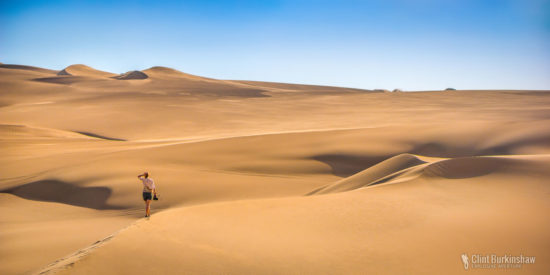
Huacachina Desert, Peru
Another example of where the inclusion of people helps to provide scale is this photograph from Göreme, Turkey. Without the people standing in the shot for comparison, the viewer wouldn’t have as much appreciation for the sheer size of these Voodoos (or Fairy Chimneys).
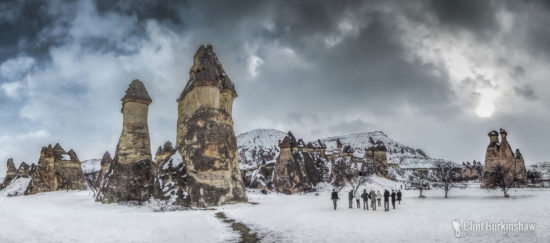
Voodoos in Turkey
A word of advice though: Be careful about making the photograph too much about the person. It’s best to keep their inclusion subtle so it doesn’t distract from the surrounding landscape (ideally the real focus of the photo). The following is a shot that includes the landscape and a person, but focuses too much on the individual (both the focus point and subject matter).

Hiking in Fitzroy
The human element doesn’t have to be a person; it can also be structures of any kind as long as they’re familiar. This ensures that the viewer can relate to it and its surroundings, whether that be for the size comparison or simply to convey the emotion of the scene. Take the following image of the Himalayas, for example. These mountains are enormous! However, my attempt to describe their sheer size sells them short and has minimal effect on the receiver. But including a small village being shadowed by some of the world’s tallest peaks, definitely has an effect.
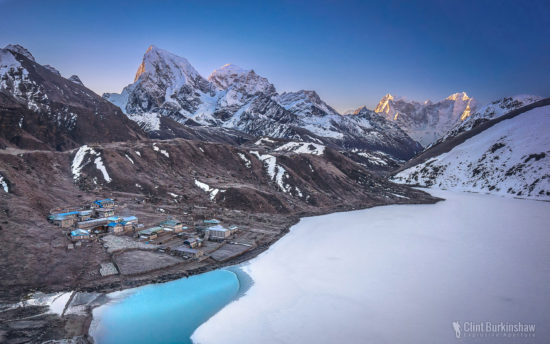
Himalayas, Nepal
Here’s a scene in which I visited recently. This canyon in the north-western mountains of Slovenia was quite impressive. I took multiple photos of the landscape, both with the wooden platform and without it. By far, the ones that include the characteristically worn out wooden pathway are among my favourite shots. I feel it conveys more emotion and more of a story, while still heavily focusing on the landscape.
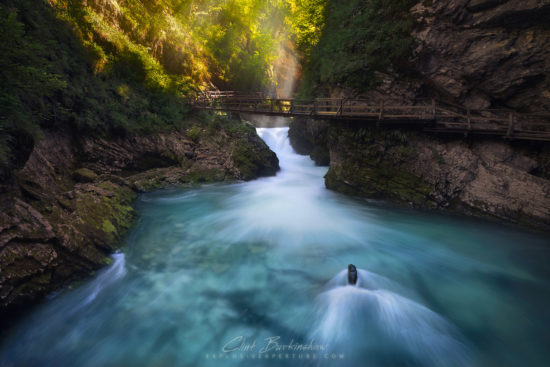
Canyon in Latvia
So, while not every scene deserves the introduction of a human element, it’s worth experimenting in certain scenarios with people and/or structures to see whether or not it enhances the shot. Next time you struggle to portray the size of an object in your photo, or if you find it hard to portray the story and emotion behind the shot, consider introducing a subtle human element… it just might help.
As a final note, when the techniques mentioned above are done well, it propels the viewer to envision themselves right there in that moment. You want to draw the viewer’s eye in and have them thinking, “WOW – I want to stand right there.”

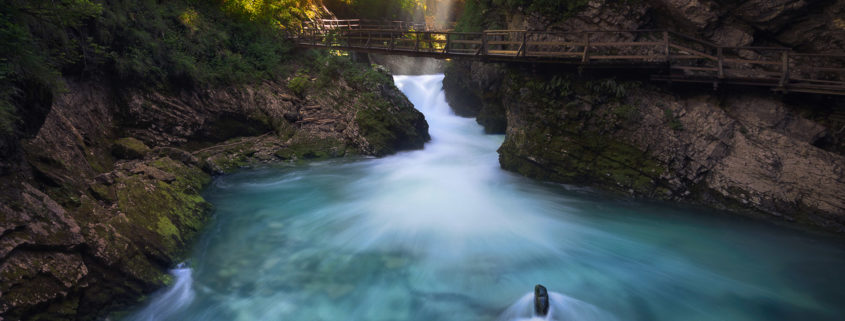


Human in landscape is my major and recent evolution in mountain photography. I completely agree that human gives another dimension; not only scale or focal point but that also increases the feeling of mountain power in contrast with human smallness. It gives a sense of humility.